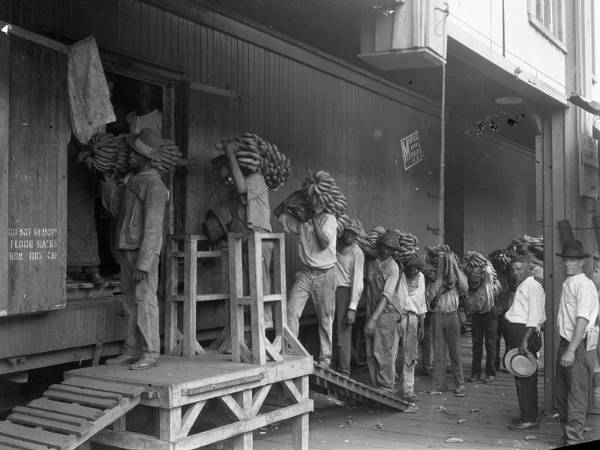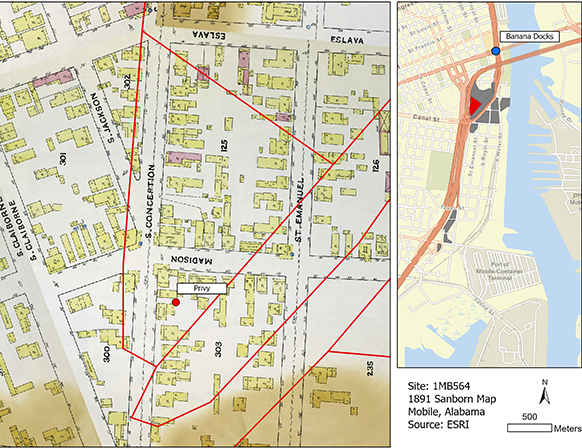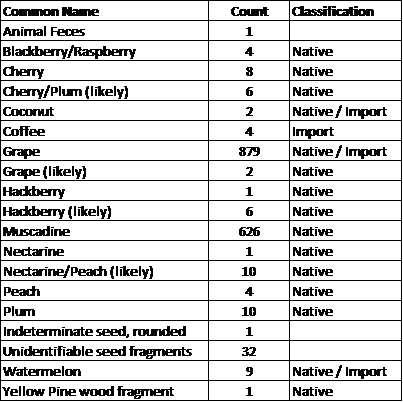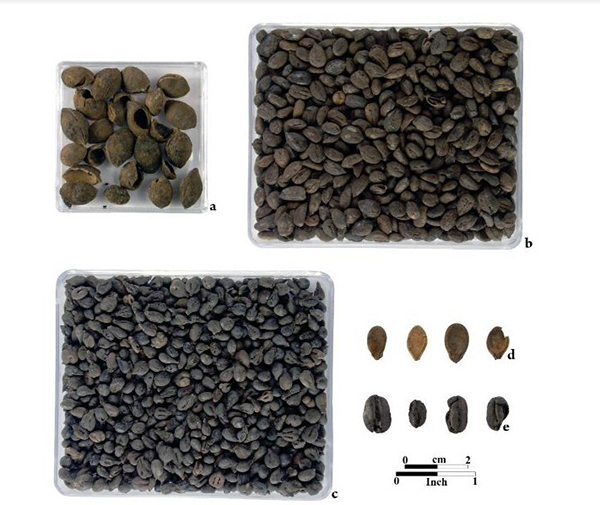Archeology in Action: Botanical Remains from Mobile's Banana Docks
Posted on April 5, 2023 by Chelsea Cook
The Banana Docks, a large open-air market constructed in 1857, provided a landing and launching place for fruits and vegetables imported from the southern hemisphere. In the early 1900s, Mobile was the third largest importer of bananas in the country. At that time, the United Fruit Company docked their boats at the Banana Docks. Many of their employees lived in the adjacent Down the Bay neighborhood. These workers, many of whom were Black migrants, were responsible for unloading, counting, and sorting bananas. Northbound trains left with bananas and returned south with grapes and apples, resulting in a variety of available produce.

Mobile banana dock workers, 1920s. Courtesy of Erik Overbey Collection, The Doy Leale McCall Rare
Book and Manuscript Library, University of South Alabama.
We have been investigating the area near the Banana Docks as part of the I-10 Mobile River Bridge Archaeological Project. One of the most fruitful finds from this area is a privy near the rear of 305 South Conception Street, located at the Mardi Gras Camp Site. A privy is an outdoor toilet, or outhouse. Privies are often filled with trash once they are no longer useful and often contain dense artifact deposits. The 1891 Sanborn Insurance map (below) shows the privy was likely associated with a tenant building. Located blocks from the Banana Docks, this privy shows how importation influenced food availability in Mobile.
 The privy feature excavated at the Mardi Gras Camp Site marked on the 1891 Sanborn
Fire Insurance
The privy feature excavated at the Mardi Gras Camp Site marked on the 1891 Sanborn
Fire Insurance
Map (left). The project area for the I-10 Mobile River Bridge Archaeology Project
with the Banana Docks
marked in blue, the Mardi Gras Camp Site marked in red, and other sites marked in
gray (right).
Archaeological features, such as this privy, can provide insight into past foodways in Mobile through the preservation of botanical, or plant, remains. Archaeologists who study botanical remains are called paleoethnobotanists. They analyze evidence of plants to reconstruct past environments and foodways. When we excavated the privy at the Mardi Gras Camp Site, we found diverse botanical remains from turn of the 20 th century (below). Most of the botanicals recovered are native to the Mobile Bay area; however, imports like coffee beans and watermelon seeds were also preserved.
Botanical Remains recovered from the privy at the Mardi Gras Camp Site

Grapes were the most numerous species recovered from the privy (below). This could be related to wine production in nearby Italian immigrant communities, like Daphne and Lambert. Future botanical analysis can identify the sub species of grapes, which may determine if these grapes were related to the early wine industry. We will also compare the botanicals from this privy to those found at other sites in the area to tease out food consumption patterns. Stay tuned as we continue to analyze results from the project!
 Botanical remains recovered from the privy at the Mardi Gras Camp Site.
Botanical remains recovered from the privy at the Mardi Gras Camp Site.
A: Cherry/Plum | B: Muscadine | C: Grape | D: Watermelon | E: Coffee
This information was presented by Peggy Humes at the Southeastern Archaeological Conference in Little Rock, Arkansas. Check out her poster and other research from the I-10 Mobile River Bridge Archaeology Project.
Further Reading:
Learn more about Paleoethnobotany
Learn more about Mobile’s Banana Industry
Learn more about Banana Pudding
References:
Blejwas, Emily (2019) The Story of Alabama in Fourteen Foods. University of Alabama
Press, Tuscaloosa.
Pinney, Thomas (1989) A History of Wine in America from the Beginnings to
Prohibition: Volume 1. University of California Press, Berkeley.


